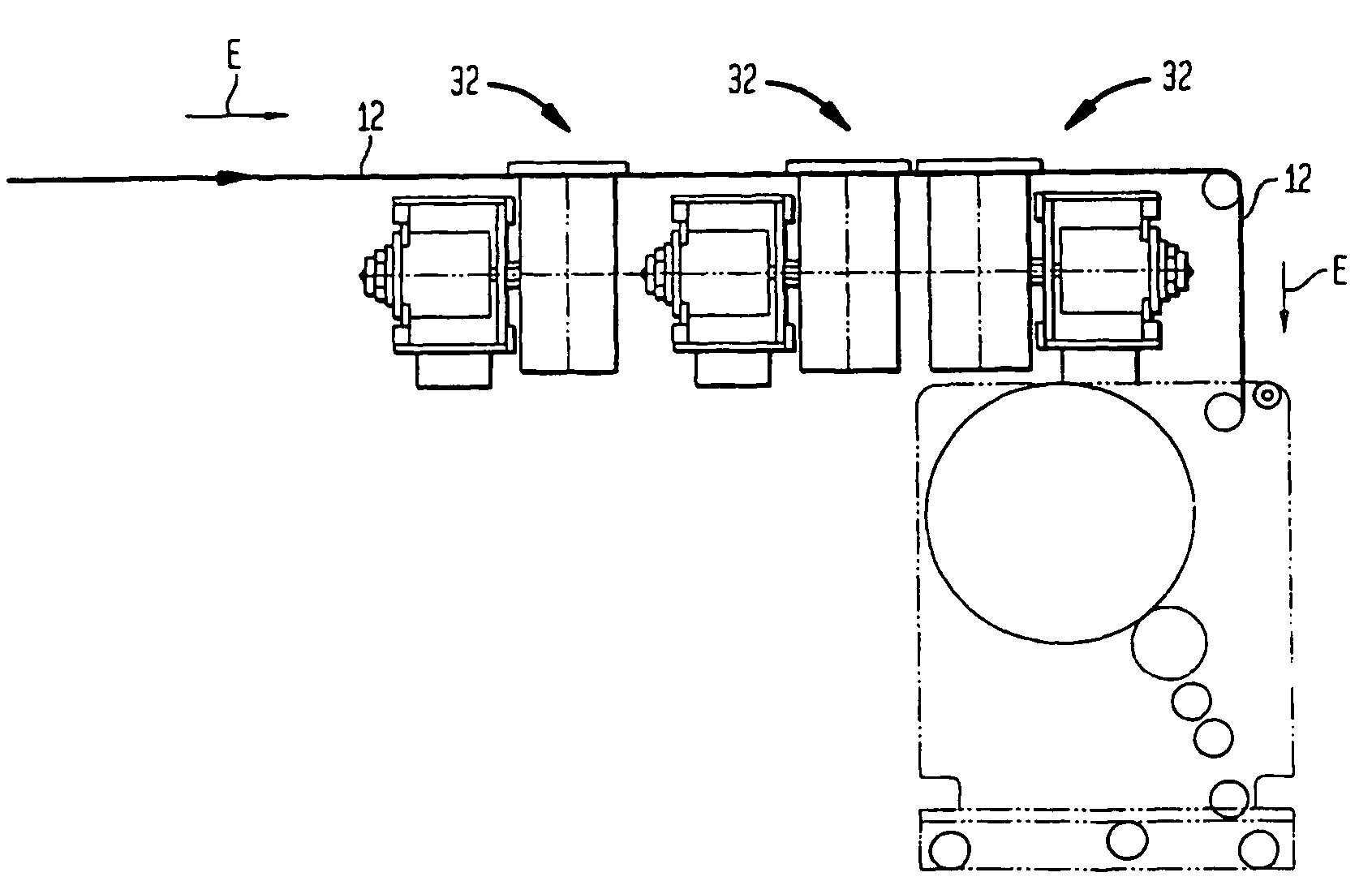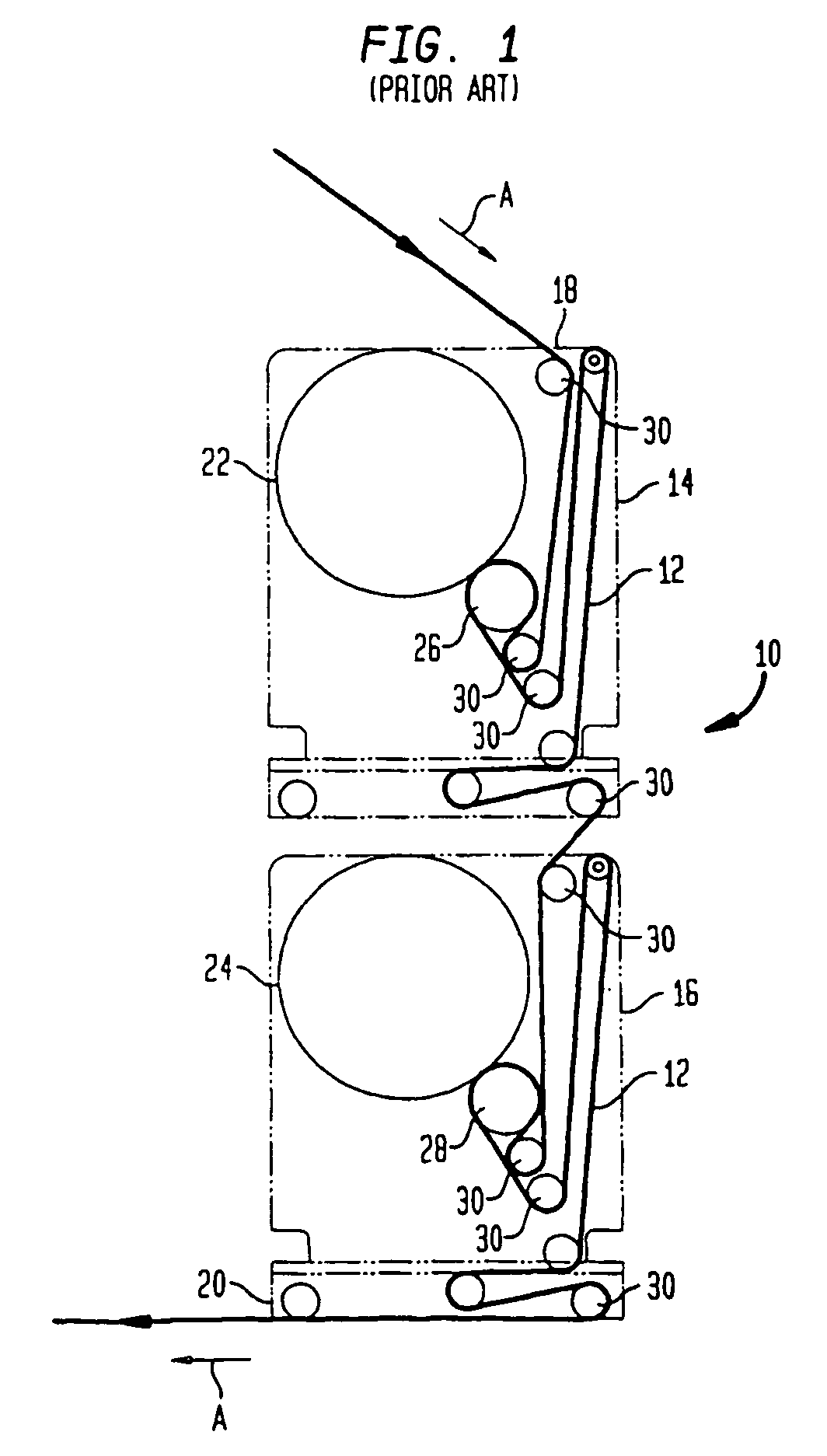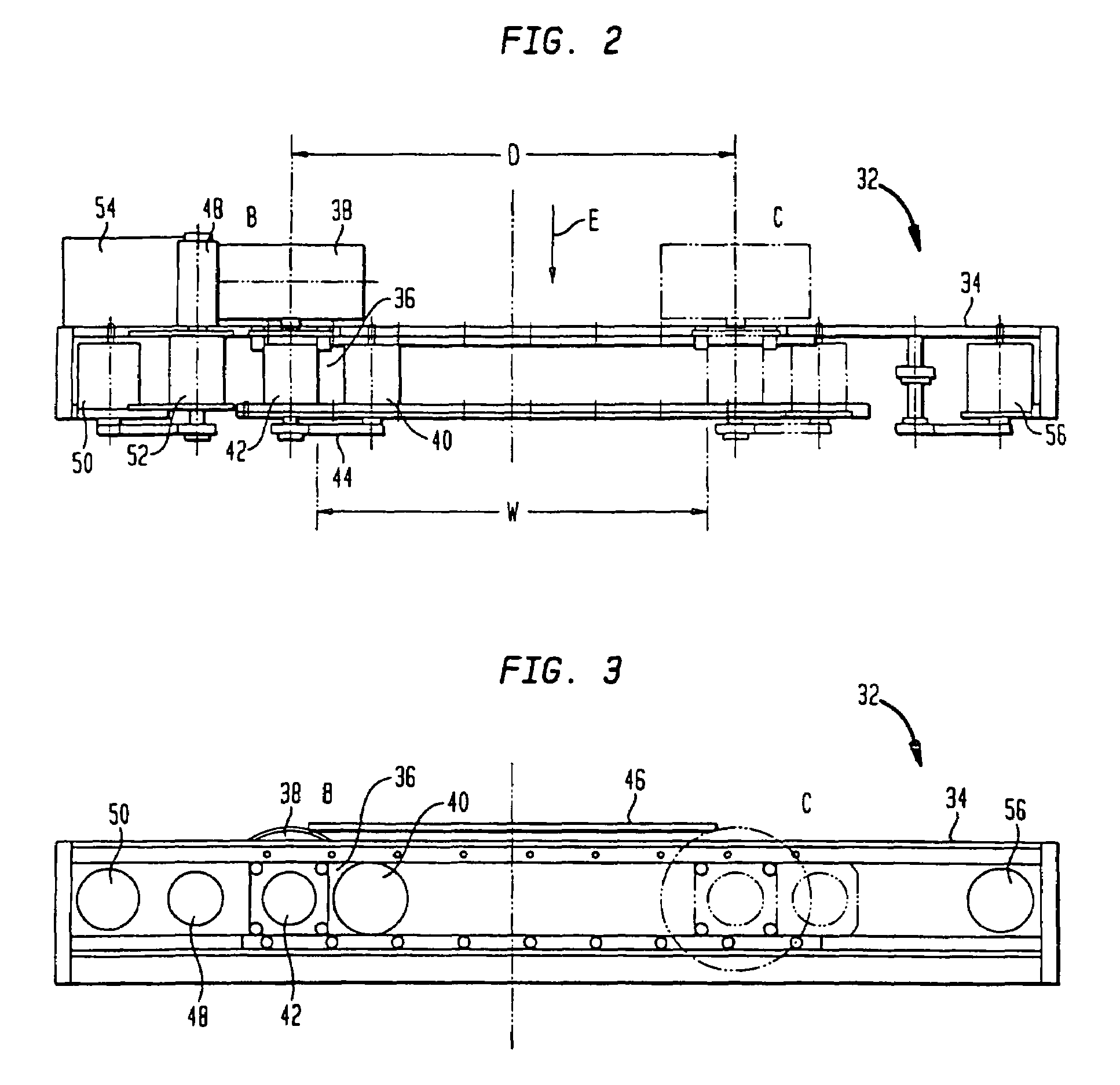Flexographic rotary platen printing press
a printing press and rotary plate technology, applied in printing presses, rotary letterpress machines, printing, etc., can solve the problems of inability to maintain an even print, indicia of printing, and inability to accurately carry out printing processes, etc., to achieve accurate printing.
- Summary
- Abstract
- Description
- Claims
- Application Information
AI Technical Summary
Benefits of technology
Problems solved by technology
Method used
Image
Examples
Embodiment Construction
[0026]Referring now to FIG. 1, there is shown a schematic view of a typical prior art flexographic printing press system 10 currently used to carry out the printing of multi-colors onto a web 12 of flexible material. As can be seen, in order to print more than one color, the flexographic printing press system 10, of necessity, requires, basically, separate printing presses, that is, there is a first printing press 14 for printing indicia of one color onto the web 14 and a second printing press 16 to print the second color onto that web 12. Obviously, while the FIG. 1 illustrates a printing system 10 utilizing two colors, there may be additional colors that can be printed on to the web 12 with the consequent equal number of additional printing presses that print those additional colors onto the web 12.
[0027]In FIG. 1, however, it can be seen that the web 12 progresses through a serpentine path as it passes from the entrance 18 to the first printing press 14 to the exit 20 of the seco...
PUM
 Login to View More
Login to View More Abstract
Description
Claims
Application Information
 Login to View More
Login to View More - R&D
- Intellectual Property
- Life Sciences
- Materials
- Tech Scout
- Unparalleled Data Quality
- Higher Quality Content
- 60% Fewer Hallucinations
Browse by: Latest US Patents, China's latest patents, Technical Efficacy Thesaurus, Application Domain, Technology Topic, Popular Technical Reports.
© 2025 PatSnap. All rights reserved.Legal|Privacy policy|Modern Slavery Act Transparency Statement|Sitemap|About US| Contact US: help@patsnap.com



